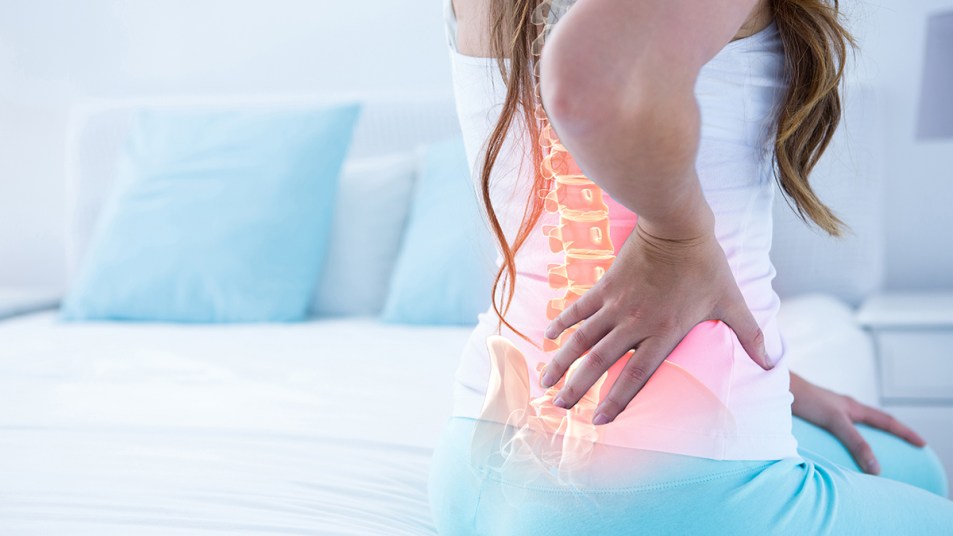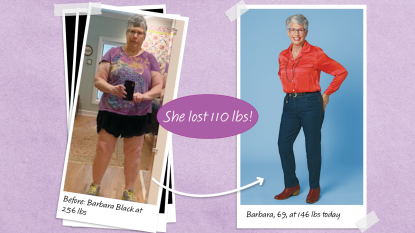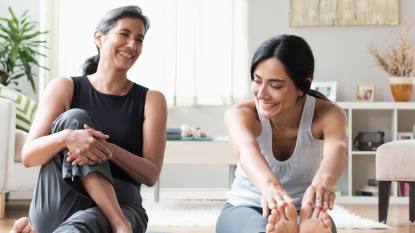How to Pop Your Back Safely: Top Chiropractors + Spine MD Weigh In
Cracking your back too often or in the wrong way can bring on the back trouble you're seeking to avoid

You know that feeling: You’ve been sitting at your desk for a few hours or standing at the stove cooking dinner, when you start to feel pressure or strain in your lower back. The next thing you know, you’re twisting and turning in an attempt to pop your lower back. We’ve all been there. But is all that snap, crackle and popping safe for the long-term health of your spine? Is there a better alternative to cracking your back? Keep reading to find out what your back is trying to tell you, and learn if it’s even possible to safely crack your back on your own.
Why do I feel the urge to pop my lower back?
The urge to pop your back starts in the vertebrae, the interlocking bones in your back that protect and support your spine and bear most of the weight put on your spine. Pockets of fluid surround each vertebra. And when pressure builds from tension in your back, those pockets fill with gas, explains Matthew Cavanaugh, a chiropractor in Lafayette, Louisiana. “Sometimes the simplest movement might result in an audible pop or cracking sound as the pressure and gas are released from the fluid. Feel-good hormones called endorphins are also released when joints pop. And this doesn’t just happen in your back: Dr. Cavanaugh says this can happen in other parts of the body, especially your knees or neck.
But if your back doesn’t pop on its own, you might feel compelled to twist and turn and do it yourself. It’s a common urge, especially if you spend a lot of time at a desk or driving. “Sitting for prolonged periods of time can create that feeling of needing to pop or crack your back because of the pressure placed on the lower back while in the seated position,” says Dr. Cavanaugh (check out another surprise side effect of too much sitting). Standing in one position for long periods of time can have a similar effect. (Lower back pain can cause be caused by hip issues. Click through to see the uneven hips exercises that ease pain.)
Is it OK to pop my lower back?
Your back — or any joint — cracks and pops naturally during normal movement, like when you stretch or when you get out of bed, stand up or even reach for something on a tall shelf. As for intentionally cracking your back, that “is usually safe, as cracking your back may promote feelings of relaxation and improve range of motion,” says Hossein Elgafy, MD, professor of orthopaedics at The University of Toledo College of Medicine and Life Sciences, and chief of spine surgery at The University of Toledo Medical Center.
But don’t start twisting or contorting yourself just yet! Experts agree there’s a right and wrong way to pop your back… keep reading for more on that.
How often can I crack my lower back?
“You shouldn’t purposely crack your back several times a day or week,” says Dr. Cavanaugh. Aim for no more than once or twice a week at most. Indeed, a back in constant need of daily cracking could be crying out for professional attention to look for causes of the pain.
And never crack your back if it hurts — even a little. “If you feel any pain and have the need to crack your back, you should talk to your doctor to determine the cause and best long-term management options,” says Dr. Elgafy. (Click here for natural remedies for back pain)
What are the risks of popping my lower back?
Despite the instantaneous pain-relieving effect, popping your back more than once a day can, ironically, lead to pain and discomfort in your vertebrae and back ligaments from overstretching or improper manipulation. “Muscle spasms or strains, increased pain and discomfort and, in worst-case scenarios, disc herniations can all result,” cautions Dr. Cavanaugh.
That pain can linger, too, because chronic back popping can result in overstretching of the ligaments that help maintain spinal stability and cause abnormal motion between your vertebrae. “This can increase and accelerate degenerative changes that lead to osteoarthritis,” says Dr. Cavanaugh.
Is there a ‘right’ way to pop my lower back?
Turns out you can get the feel-good relief of popping your back without actually popping it — and that’s a strategy Dr. Cavanaugh recommends. He says the best way to safely relieve pressure in your lower back is by lying down and stretching out daily. If you’re standing or seated, gravity is applying force from your head down through your body to your spine. Coupled with bending and twisting, this will compromise the health of the discs in your spine.” Stretching just a few minutes is easy to fit into your daily routine. You can even do it in bed!
His back-friendly move: Start by lying flat on your back and bring one knee toward your chest, keeping the other leg straight. Slowly twist your lower back by moving your bent knee across your body trying to touch your knee to the floor on the opposite side to relieve pressure…and maybe even hear a pop or two.
Are there alternatives to popping my back?
If you want to stop popping your back and you’re experiencing pain or pressure in your back, try using a foam roller to feel better, says chiropractor Allen Huffman, DC, CKTP, BS in Landover, Maryland. You can use a foam roller once or twice a day, especially if you frequently feel tension that makes you want to pop your lower back. “This is a great way to relieve lower back pressure because foam rolling targets the fascia, connective tissue that supports muscles and ligaments and helps break up tight areas that may form there, while stretching focuses on elongating muscles,” says Dr. Huffman. (Plus, foam rolling can help you streamline your figure!)
For more tips on keeping your back healthy, check out these stories:
Professional Stretching Is the Latest 50-Plus TikTok Trend — But What Is It?
This Common Vitamin Could Stop Lower Back Pain in Its Tracks













